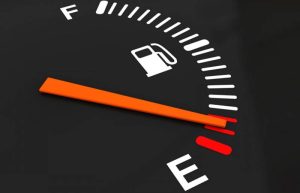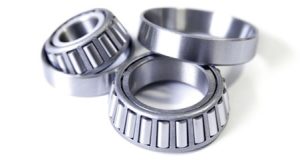In the quest for better fuel economy and reduced emissions, automakers focus on engine efficiency, aerodynamics, and lightweight materials. But one crucial — and often overlooked — component also plays a vital role: the wheel hub and bearing system. These components not only support the vehicle’s weight and facilitate smooth rotation but also significantly impact rolling resistance and, as a result, fuel efficiency.

This article explains how hub and bearing design affects energy consumption, what factors contribute to increased rolling resistance, and how proper component selection can help drivers save fuel and reduce wear.
What Is Rolling Resistance?
Rolling resistance is the energy a vehicle uses to keep its wheels rolling at a steady speed. It’s the force resisting the motion when a tire rolls on a surface, and it is affected by:
-
Tire design
-
Surface friction
-
Wheel alignment
-
Bearing friction
Wheel hub assemblies and bearings are central to this because they directly control how freely the wheels rotate.
How Bearings Affect Fuel Efficiency
Wheel bearings allow the wheels to spin with minimal friction. However, if they’re poorly designed, misaligned, or worn out, they create drag that forces the engine to work harder.
Key Fuel Efficiency Factors
| Bearing Factor | Effect on Fuel Efficiency |
|---|---|
| Internal friction | Higher friction = more energy required to move wheels |
| Seal design | Poor sealing increases contamination, degrading grease |
| Lubrication quality | Inferior grease increases rolling resistance |
| Tolerance and precision | Loose or tight tolerances waste energy through drag |
| Bearing preload | Incorrect preload increases heat and resistance |
Hub Design and Rolling Resistance
The hub acts as the housing and support structure for the bearing. Its design influences how loads are distributed, how well the bearing performs under pressure, and how much heat or mechanical stress is transferred.
Hub Design Considerations
| Hub Feature | Impact on Efficiency |
|---|---|
| Weight and material | Lighter hubs reduce unsprung mass, enhancing economy |
| Manufacturing precision | Poor machining increases misalignment and friction |
| Integrated vs. serviceable | Integrated hubs reduce tolerance issues and failure risk |
| Load distribution geometry | Improper geometry increases stress and rolling drag |
Friction: The Hidden Fuel Thief
Friction inside wheel bearings may seem minimal, but even slight increases in resistance can reduce overall fuel economy. According to some industry studies, wheel bearing resistance accounts for up to 6% of total drivetrain energy loss.
When a bearing operates with poor lubrication, contaminated grease, or excessive wear, it creates more rolling resistance. Over time, this leads to:
-
Higher fuel consumption
-
Increased tire wear
-
Greater engine load
-
Elevated bearing temperatures (shortening bearing life)
Signs Your Bearings Are Hurting Efficiency
You might not notice a sudden drop in fuel economy due to bad bearings, but over time, signs emerge:
-
Drop in fuel efficiency despite no engine or tire changes
-
Noise (humming, grinding, or growling) at higher speeds
-
Vibration through the steering wheel or chassis
-
Uneven tire wear caused by bearing misalignment
-
Excess heat near the wheel hub after driving
If any of these symptoms appear, the bearings may be increasing drag and fuel usage.
Bearing Technologies Designed for Efficiency
Modern wheel bearings have evolved to reduce energy loss and improve performance. Key features include:
Low-Friction Bearing Designs
-
Tighter internal tolerances to ensure smoother operation
-
Optimized contact angles for balanced load handling
-
Low-drag seals that prevent contamination without increasing resistance
-
Advanced synthetic lubricants for stable performance across temperature ranges
Lightweight Hub Assemblies
-
Aluminum or composite hub housings to reduce weight
-
Pre-greased, sealed bearing units that minimize maintenance and ensure long-term efficiency
-
Integrated ABS sensors for reduced part complexity and improved rolling dynamics
How to Maximize Efficiency with the Right Bearings
When replacing or upgrading hub and bearing assemblies, make smart choices that contribute to long-term fuel savings.
Selection Checklist
-
Choose OEM-spec or performance bearings with low-friction features
-
Look for sealed, pre-lubricated units with synthetic grease
-
Consider lightweight hub assemblies to reduce rotating mass
-
Verify that the bearing has tight tolerances and clean machining
-
Ensure proper installation preload to avoid drag or instability
Real-World Fuel Savings Potential
Here’s a simplified comparison of how bearing performance affects fuel economy:
| Bearing Condition | Estimated Fuel Efficiency Impact |
|---|---|
| Optimized low-friction design | Up to 2–3% improvement |
| Standard OEM bearing | Baseline |
| Worn or poorly lubricated | 3–6% drop in fuel efficiency |
Assuming average vehicle use of 15,000 km/year, that could mean 30–70 liters of extra fuel per year due to bad bearings.
When to Replace Bearings for Efficiency

To maintain optimal fuel economy and driving performance, bearings should be inspected and replaced when:
-
Noise or vibration is present
-
Vehicles exceed 130,000–160,000 km without prior bearing service
-
You notice reduced rolling smoothness during manual wheel spin
-
You’re upgrading tires or suspension (bearing upgrades often complement these changes)
Where to Buy Efficient, High-Quality Bearings
To ensure you’re getting components that contribute to lower rolling resistance and better fuel economy, shop from a trusted source.
This store offers a wide selection of wheel hubs and bearing assemblies — from standard replacements to advanced, low-friction, performance-oriented units. All products are categorized by vehicle compatibility for fast and accurate selection.
Final Thoughts
Fuel efficiency doesn’t start and end with your engine. Hidden components like wheel hubs and bearings can have a surprising impact on how much energy your car needs to keep moving. By understanding how these parts affect rolling resistance — and choosing the right designs — you can enjoy:
-
Lower fuel bills
-
Smoother, quieter rides
-
Longer tire and bearing life
-
Reduced wear on your drivetrain
So, next time you service your wheels or brakes, don’t forget what’s at the center of it all — the hub and bearings.
Need better performance and economy?
Buy Hub & Bearings online and make every kilometer more efficient.